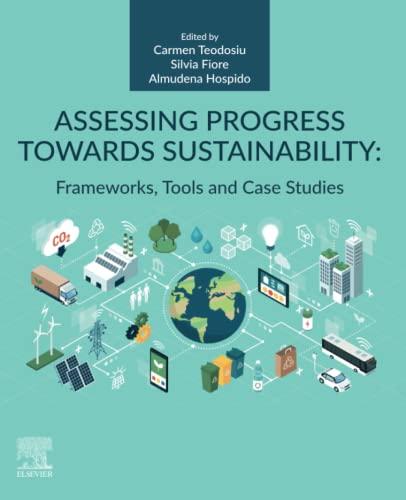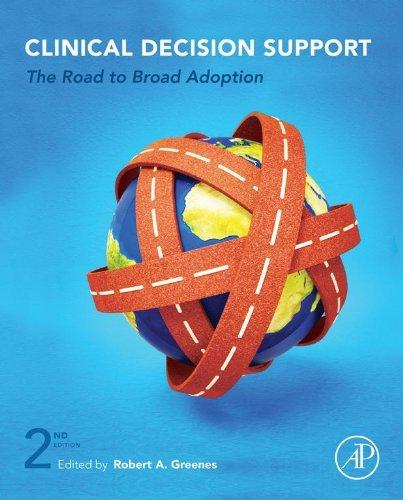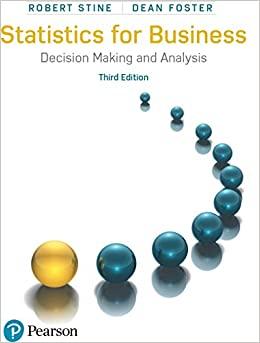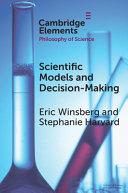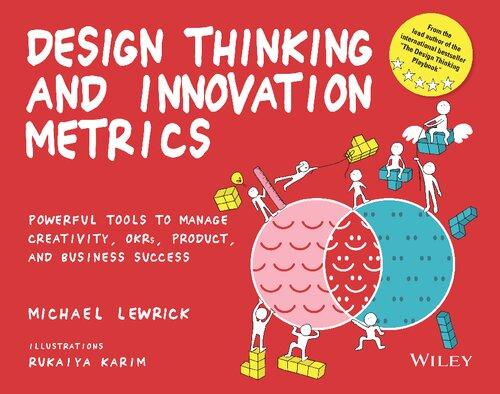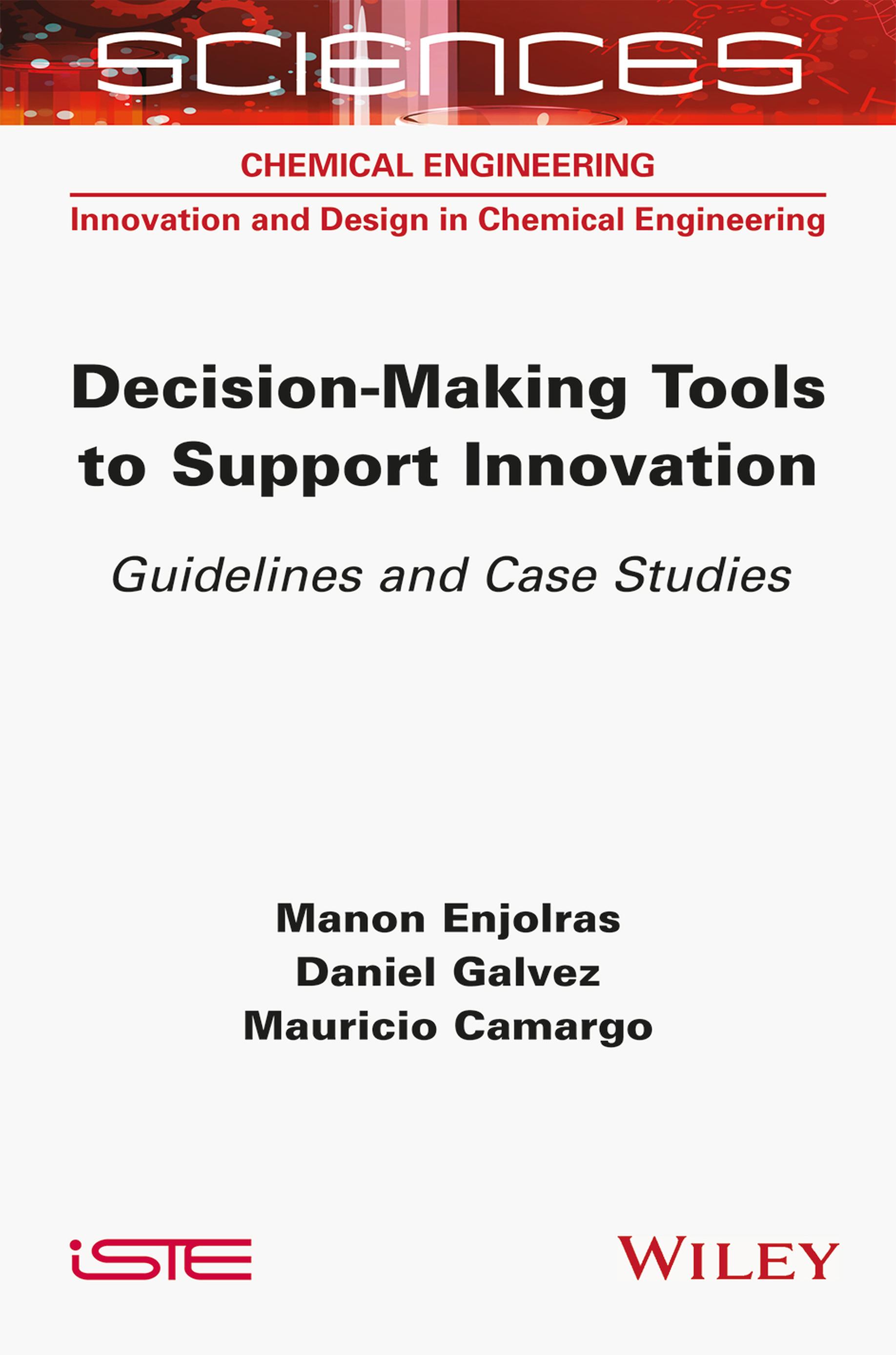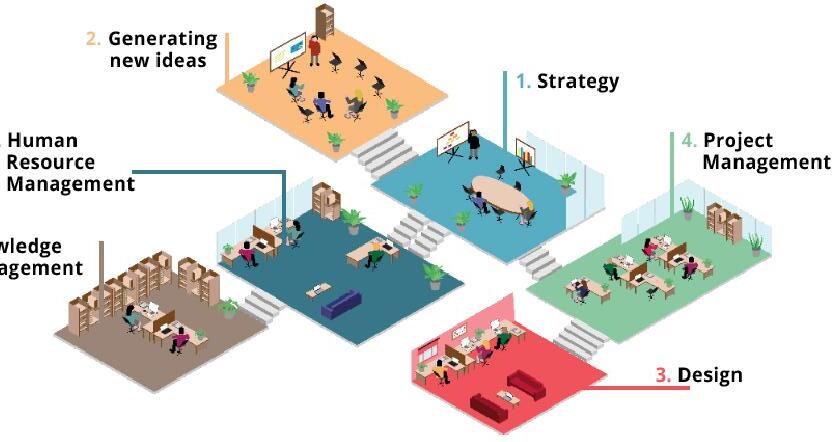Foreword
Christian FONTEIX
ERPI, ENSGSI, Université de Lorraine, Nancy, France
As a specialist in modeling in process engineering (formerly known as chemical engineering), I would frequently address the issue of the use of models in industrial process optimization for the purpose of making a decision in innovation. Usually, this would be a question of optimizing a single function (mono-objective optimization), often cost. At the end of the 1980s, one of my PhD students was developing a diploid genetic algorithm, where genes were encoded in real numbers because this type of optimizer was able to minimize or maximize a continuous or non-continuous function, whose variables could be real numbers or integers. The student told me about a discussion she had with another student at a convention about multi-objective optimization, which was to replace single-objective optimization in the future, and I realized that this replacement was possible with the help of the algorithm that had been developed and the Pareto domination principle. Since then, several of my students have conducted research on multi-criteria optimization (a term preferable to multi-objective optimization) and its industrial applications.
In the late 1980s, I also met Professor Laszlo Nandor Kiss, at the University of Laval, Quebec, Canada, who introduced me to multi-criteria analysis, referred to as decision-making engineering by engineers. I then quickly understood that this tool was complementary to multi-criteria optimization and essential for making decisions in innovation at the
Decision-Making Tools to Support Innovation, by
Manon ENJOLRAS,
Daniel GALVEZ and Mauricio CAMARGO. © ISTE Ltd 2023.
industrial level. In fact, for industry leaders, multi-criteria optimization makes it possible to define a set of compromises representing objective information: it effectively serves as a way to reduce the number of alternatives considered to make an innovation decision. But this method will not be sufficient if there is a high number of criteria and alternatives. Decision makers will need to take into account the subjectivity of their preferences. This leads the decision-making process used by industrialists to be modeled by “measuring” such preferences. However, choosing a decision model is not easy because, for example, it is necessary to know whether having a sufficient value for one criterion can or cannot compensate for a low value of another criterion.
Once the choice has been made, it is natural to ask: was this the right choice, the one that best represents that of the decision maker? This means that it is necessary to assess the robustness of the decision in relation to the choice of the model, the values assigned to the parameters defined by the preferences and the uncertainty in the evaluation of the criteria for each alternative. This is not easy to do in innovation decision-making, especially in the current fluctuating industrial context.
In the early 2000s, I met Mauricio Camargo, who was interested in these issues related to decision-making in innovation. Today, he teaches them and conducts research activities in the field. He is a decision specialist in business innovation who has been able to perfectly adapt and change the tools for improving this innovation in an industrial context. On the basis of his research work, in collaboration with other researchers, he now presents the knowledge that is essential for innovation managers in an industrial setting in this book for the ISTE Science Encyclopedia.
It is not a course, strictly speaking, but rather a remarkable manual outlining good practices that are very useful to practitioners. The book clearly highlights how multi-criteria analysis can contribute to the search for compromises when it comes to innovating in various industrial and manufacturing sectors. Thus, this book should be of interest to many readers, as it contains a large number of innovation decision models and preference models.
As specialists in the field, the authors have chosen to present six of these that are among the most frequently used today. On this basis, the book is structured in six chapters, each of which is devoted to a particular technique, which is described, detailed, explained and applied to various problems
related to decision-making in innovation: PROMETHEE (including Gaia plane) for an idea selection process during a creativity workshop, AHP (including AHP-DEMATEL coupling) for product design including the search for informed decision-making from the first phases of the design process, Rough Sets (including DRSA) for strategic decision-making in the commercialization phase, MAUT for the construction of a portfolio of adapted and compatible business projects, ELECTRE for the management of human resources and the recruitment process used for new staff members and TOPSIS for knowledge management within the company and in the entire value chain, which is the successive set of value-added activities that make it possible to start from raw materials in order to obtain a finished product with targeted use value for a customer.
This book is a must-read, which is highly recommended for decision makers in industrial and service companies to provide them with solutions and an open-mindedness necessary for their operations involving innovation decision-making. And it is also recommended for academics seeking to discover and apply multi-criteria analysis methods in their teaching and research projects and activities.
Introduction
In our daily lives, we all must make decisions of different kinds. These might include where we go to eat lunch, our next trips, the next new car we will buy, our career development, etc. If the choice is to be made between several alternatives and if it is dependent on multiple different factors, then we are faced with a multi-criteria decision problem. Generally, people tend to reduce the limits of the problem by transforming it into a general decision, in other words, a problem that highlights a predominant factor at the time when the decision is made. However, when this decision involves an important issue, reducing its complexity would not be appropriate because simplifying the problem would also entail a loss of information necessary to make the right choice.
In companies, decision-making is also a very common practice, though one that is complex, because it is necessary to reconcile different factors and points of view. For example, in the development of a current project, the manager is faced with several decisions: from the allocation of resources to the choice of suppliers, the mode of transport to be used or even the method of financing. Not to mention that with the current development of the digital world, the data sources used to qualify and compare the alternatives of choices have multiplied.
In addition, in the specific case of an innovation project, the decisions become more complex. Indeed, by its own nature, the innovation process involves the simultaneous involvement of technical, economic and
Decision-Making Tools to Support Innovation, by
Manon ENJOLRAS, Daniel GALVEZ and Mauricio CAMARGO.
© ISTE Ltd 2023.
environmental factors associated with a new product, as well as changes in the company’s operating modes, the integration of new players or uncertainties related to a new market.
For all these reasons, making the right decision (and making it on time) can mark the difference between success or failure. That is why being able to rely on decision-making tools and methods is extremely useful to companies. In this book, we will present several multi-criteria decision support methods by analyzing how they are applied in the context of practices specifically related to the innovation process.
I.1. The innovation process and decision-making
In recent years, the management of the innovation process has evolved toward becoming standardized in companies. As a result, companies are seeking to organize themselves to make the innovation process more and more systematic and recurrent.
In the 2000s, innovation studies were focused on the internal processes that characterize the innovation potential of a company. Chiesa et al. (1996) published one of the first research papers on models for assessing the ability to innovate. Their model served as a reference for the development of a trend for assessing enterprises’ ability to innovate based on good practices. These models have made it possible to diagnose, understand and improve the ability of companies to innovate through transferring knowledge, methodologies and successes of leading organizations in this field.
The standardization of the innovation process within companies took an important step forward with the creation of the international standard ISO 56002 (2019). This standard provides general guidelines for establishing an innovation management system.
The implementation of this system has potential advantages for companies and is based on many different elements (Figure I.1): leadership (5), which reflects the commitment of management in promoting a culture of innovation; planning (6) to establish the path to follow to achieve the company’s innovation objectives; support functions (7) grouping the
necessary resources to establish, implement, maintain and improve the innovation management system ; operational activities (8) to implement all actions necessary to manage the system; evaluation (9) and improvement (10) to control the evolution of the innovation management system to ensure its success over time; and finally, contextual elements (4) to make the entire system specific to each company.
Using the ISO 56002 (2019) standard as a reference framework in this book, we will more specifically use a model in line with the foundations associated with it: the potential innovation index (PII) proposed by the ERPI research laboratory of the University of Lorraine (Boly et al. 2000, 2014; Galvez et al. 2013). The first works on PII date back to the 2000s. From that point forward, this index has progressively evolved into its current version, supported by academic research, expert opinions, interviews with the industrial sector and cases of application in real-world situations.
The latest version of the PII is based on multi-criteria approaches, grouping the activities and processes of the innovation management system companies within six major practices.
– Generating new ideas: an innovative company needs to strengthen its ability to generate ideas. The use of creativity techniques, the integration of users and the establishment of a monitoring system help to generate a constant and effective generation of ideas.
– Design: in order to innovate, a company must be able to convert ideas into concrete realities by materializing them. Thus, design is a key step for an innovative company. There are various resources to support design, such as technical resources, methodologies or computer tools.
– Strategy: a company that seeks to develop its innovation potential must look to the future and adopt a forward-looking vision. It must define where its value will be found over the short, medium and long term and establish an appropriate action plan. The company must also anticipate and arbitrate the financial aspects and those related to intellectual property.
– Project management: the success of an innovation project depends on the management of the resources involved: financial resources, technical
resources and human resources. The management of an effective innovation project must be flexible to properly manage the uncertainty that is inherent in innovation.
– Human resource management: companies that innovate have an employee profile oriented toward risk-taking, the desire for professional development, resilience and a thirst for change. Human resources management must encourage and support these behaviors, in addition to ensuring the acquisition and monitoring of the skills necessary for the proper daily functioning.
– Knowledge management: developing memory capacity is essential in allowing a company to learn from previously completed innovation projects. This learning allows for knowledge to be shared and reused, as well as for continuous improvements in the innovation process.
PII is an assessment tool that allows companies to measure their capability to innovate through a self-diagnosis1 based on the assessment of their maturity in relation to the six practices presented above. This diagnosis evaluates the innovation potential of companies by identifying their strengths (drivers) and their difficulties (obstacles), thus allowing for the development of an action plan that is able to improve their capability to innovate.
Thus, innovation is based on taking into account different interrelated elements within a management system to be managed. This requires the implementation of good practices. Although innovation has become an increasingly common activity in companies, it must be recognized that it is an issue that is complex. More specifically, an innovation project is defined by three characteristics (Kapsali 2011): its uncertainty, its complexity and its uniqueness. Indeed, the tasks needed to complete the project are subject to inevitable changes, which give rise to continuous evaluations and iterations of the project. In addition, innovation projects continue to involve more and more stakeholders who must communicate and agree on the direction and progress of such projects. Therefore, decision-making should be streamlined as much as possible and should be shared and accepted by all relevant stakeholders.
1 Self-diagnosis available at: www.innovation-way.com/.
Figure I.1. Innovation management system – ISO 56002: 2019
I.2. Graphical representation of the potential innovation index (source: www.innovation-way.com/)
Figure
Indeed, the innovation process operates in a context of uncertainty, where decision-making depends on several factors. For example, let us suppose that a car company wants to launch a new automotive product line that improves the environmental impact of its vehicles by integrating a solar energy system. The criteria of an environmental nature associated with this decision will be positively impacted, while the economic and technical criteria, for their part, will potentially suffer a negative impact. Making a car with a completely new energy system will likely require a more significant investment, and the technical complexity will also increase. Thus, we will get a car that is environmentally friendly, but is complex to manufacture and more expensive than others. The question then arises: should the company prioritize sustainability, technology or cost? Thus, it is not always easy to find a balance to satisfy several criteria at the same time. It is therefore necessary to make trade-offs and seek a consensus.
I.2. Multi-criteria decision-making
The study of decision-making is multidisciplinary by nature. It has been the subject of study within several disciplines, such as behavioral economics (Thaler and Sunstein 2009) and experimental psychology (Kahneman 2011; Klein 2017). As defined by Gary Klein in his book Sources of Power: How People Make Decisions, there are two main strategies that humans use for making decisions. The first is “situational decision-making, or naturalist strategy”, in which decision-makers have to make decisions, in real time, under pressure, in dynamic environments, and in which the objectives are not clearly defined (e.g., a firefighter, a member of the military or a doctor in an emergency situation). For this type of decision, the important factors are the experience of the decision-makers, their intuition and their ability to imagine possible scenarios. The second type of decision, called the “rational choice strategy”, involves subdividing the problem into criteria in order to structure decision-making. This type of strategy is more suitable when choices need to be justified, when there are conflicts between stakeholders, when the decision-maker is in a decision optimization strategy or when there is a significant computational complexity. In this book, we are interested in the second type of decision-making strategy.
To this end, it is necessary to model the issues involved in the decision, based on criteria to be taken into account, and alternatives to be evaluated. Since the choice among these alternatives is inherently dependent on several criteria, it is necessary to build a model that brings together all these criteria,
in order to ensure that they are taken into account when making the final decision. To accomplish this, the notion of multi-criteria analysis is used.
Multi-criteria analysis necessarily leads us to work with several factors at the same time. These factors will allow us to assess all the dimensions that determine the effectiveness of alternatives considered in the decision problem. This group of alternatives can be finite or infinite. If the problem is characterized by an infinite number of alternatives, we are faced with a multi-objective optimization model. In this work, we focus on the study of decision problems characterized by a finite number of alternatives, that is, discrete multi-criteria problems. The objective is to determine the alternative that represents the best compromise to satisfy all the criteria for evaluation. For this, it is necessary to clearly understand the problem and correctly establish the decision to be taken.
An adequate definition of the problem begins with the decision to be made; we need to clarify the question we are trying to answer. Using this question as a starting point, the components of our multi-criteria problem are then defined: the alternatives and the criteria.
The alternatives are all valid options that offer a solution to the decision question that is posed. These alternatives must be able to be evaluated by different criteria which will allow us to determine which alternative best meets the preferences of the decision-maker.
The criterion must evaluate all the characteristics of the alternatives which are important for the decision-maker. Each criterion will be assigned an evaluation scale to determine whether an alternative is strong or weak regarding this criterion. Each alternative must be evaluated according to all the criteria. If this is not possible, it means that the alternative or criterion has been incorrectly defined. To ensure that the definition of the criteria is correct, we must take into account the following considerations:
– Redundancy (exclusion principle): we must avoid using two criteria defined as different to evaluate the same characteristic. For example, for the prioritization of projects, if we consider the criteria of “costs” and “revenue”, we will not need to add a criterion of profitability because it is possible to combine the two previous criteria to arrive at the final one. In this way, we avoid double counting and redundancies.
– Representativeness (principle of completeness): the set of defined criteria should best measure all dimensions that characterize decision-
making; ideally, 100% of the problem should be assessed. These first two considerations are combined in the literature within the principle of support for the decision-making process called “MECE”. This principle emphasizes the importance of building a benchmark for the criteria that is “mutually exclusive and collectively exhaustive”. Next, we will talk about the principle of exclusion and completeness (Lee and Chen 2018).
– Operativeness: all criteria must be measurable by means of an evaluation scale (Roy and Bouyssou 1993). Some criteria are easier to measure than others because, by their nature, it is easier to assign a welldefined value to them. These can include the price of a product (euros), the age of a person (years), the speed of a car (km/h), etc. However, there are other criteria of a qualitative nature that can be difficult to measure, such as the color of a product, the design of a building or the quality of construction work. In this case, it is necessary to define a qualitative assessment scale, which decision-makers will use to assign a value with each alternative for this particular criterion. For example, for the evaluation of the color of a car, if the decision-maker prefers red first, then blue and finally black, we can create a three-level scale and assign the value 3 to red, then 2 to blue and 1 to black. This characteristic refers to the principle of ordinality, that is, if we look at each criterion individually, the alternatives must be able to be ranked from the best to the worst.
– Quantity: we need to define a quantity of criteria that is cognitively manageable for the decision-maker. According to a study by George Miller in 1956, the human brain can work with a maximum of seven elements at the same time (Saaty and Ozdemir 2003); it is therefore recommended to work with a maximum of seven criteria simultaneously. If the problem requires the consideration of more than seven criteria, it is recommended to group them by common axes, for example, a group of economic, technical or environmental criteria. In this way, decision-makers can work by the level of aggregation and divide the problem, thus improving their understanding.
– Temporality: the decision is going to be made during a particular period of time. All the criteria will thus be evaluated simultaneously. In the definition of the problem, it is then necessary to clarify whether the decision will be made in the short, medium or long term.
After defining the set of alternatives and criteria, we need to choose the method of resolution that is most appropriate for the problem (Guitouni and Martel 1998). This choice will depend in particular on the objective associated with the decision-making. The majority of multi-criteria analysis
methods have the objective of identifying the best alternative among those considered. Some of the most well-known methods that work in this way are as follows: the weighted average, multi-attribute utility theory (MAUT), analytical hierarchy process (AHP), elimination and choice translating reality (ELECTRE), preference ranking organization method for enrichment evaluations (PROMETHEE) and technique for order of preference by similarity to ideal solution (TOPSIS). By contrast, some other methods are instead oriented toward a characterization of the model by studying the relationships between the criteria (DEMATEL) or by exploiting the information hidden behind the implicit preferences of decision-makers (Rough Sets).
Depending on the purpose they achieve, these multi-criteria methods can be classified into four categories (Wątróbski et al. 2019):
– Description: these methods seek to understand all the ins-and-outs of the decision problem. Descriptive methods provide additional information to assist in decision-making.
– Choice: the expected result is to highlight the alternative that best meets the preferences of the decision-maker. These methods work well if the group of alternatives to be considered is small. They make it possible to differentiate alternatives that intuitively result in a similar preference for the decision-maker.
– Classification or ranking: in this case, the result is a list of alternatives ordered according to the degree of preference. This ranking is determined by the overall performance of each alternative considering all the criteria in the calculation of an aggregated score.
– Sorting: these methods make it possible to assign the alternatives to previously defined categories. The categories represent profiles of the alternatives behavior in relation to how the decision is made.
Each of these four categories is represented by a variety of methods. But in addition to the objective associated with it, the choice of the specific multi-criteria method to be used also depends on other factors. For example, the robustness of the results may represent a criterion of choice. Depending on the mathematical foundations on which the method is based, the results can be more or less robust, and in the same way, the application of the method can be more complicated depending on the computational steps to be implemented. These mathematical fundamentals also make it possible to consider the compensation phenomenon appearing in certain decision problems. This phenomenon arises when the value of the overall score is significantly influenced by a single criterion. If one criterion is evaluated
with a much higher scale than the others, it will cover up and outweigh all other evaluations. Each method is more or less capable of representing and managing this phenomenon of compensation. In the same way, the nature and availability of the input data necessary for the application of the method are to be considered. The graphical data visualization tools associated with the methods are also very useful to improve the decision-maker’s understanding. Finally, the availability of a software tool also simplifies the use of a given method by providing a user-friendly interface.
It is not possible to recommend any one method above any other a priori. According to a study by Cinelli et al. (2014), all methods have both strengths and weaknesses. The choice of the method thus depends on the available data, the characteristics of the problem and the results that one wishes to highlight. For example, in the case where a classification or a choice is desired, the AHP method does not need input data because its application makes it possible to construct the weights of the criteria with the decision-maker. This specific step of AHP can also be combined with other methods, thus making it possible to provide a weight vector as input data necessary for their application. On the other hand, in the case where the objective is a description, the Rough Sets method does not use the weight vector in its calculations and therefore does not require input data. With regard to the compensation phenomenon, the ELECTRE, TOPSIS and PROMETHEE methods make this phenomenon more manageable because they operate on the computational principle of partial aggregation (as opposed to total aggregation). Partial aggregation means that initially the alternatives are compared with each other two by two, to identify which one scores higher than the other. From these comparisons, it is possible to aggregate the results to achieve a ranking or choice. In this case, we compare them, then the second step is to aggregate them. In the case of complete aggregation, the alternatives are not compared with each other. Instead, an aggregate score is calculated from all of their evaluations, with these scores then compared a posteriori. In this case, we first aggregate them and then compare them to create the ranking of alternatives.
Finally, it is important to clarify that the multi-criteria methods shown here are constantly evolving. Improvements are regularly made, and new versions are constantly being released. Thus, the objective associated with each method, as well as its computational characteristics, depends on the version used. For example, ELECTRE I and PROMETHEE I have the objective of choosing an alternative, while the ELECTRE II and PROMETHEE II versions that have been proposed as improvements have the objective of the classification of a group of alternatives (see Chapter 5 and Chapter 1, respectively).
Necessary
of criteria
None (calculation of criteria weights included)
and weight of criteria
Table I.1. Comparison of multi-criteria methods
Sets)
None (depending on the case: classification a priori)
Weight of criteria, best and worst alternatives
In the event that we are not sure which method to use, it is recommended to apply two methods of a different nature in order to compare the results so that the decision made is more robust.
I.3. Multi-criteria methods as a support for the innovation process
In summary, moving from intuitive decision-making to decision-making supported by multi-criteria methods helps in the standardization of innovation processes. Although, in recent years, we have witnessed a development of scientific and pedagogical contributions on the innovation process and on how to manage it, we are still far from achieving a total mastery of the innovation process! In this context, the decision is a key element. Indeed, the innovation process, from its ideation stage to the process of scaling up and industrialization, is composed of a succession of decision-making processes that require technical, economic, organizational, and now sustainable compromises to be made simultaneously. In all innovative activities done by the company (the design of a new product and/or process, digital transformations or the definition of a strategy technology), the stakeholders must seek the best compromise between various and often contradictory dimensions of the same problem.
In this book, the PII and its good practices for innovation as illustrated previously in Figure I.2 will constitute a common thread to illustrate the decisions that can take place around the innovation management system in companies. Each innovation practice that is considered can thus generate decisions whose outcome impacts the company’s performance and its capability to innovate.
With this in mind, we have structured this book so that each chapter presents an example of decision-making in connection with one of the PII practices. They all follow an identical structure.
First of all, the context of decision-making is explained so as to better understand the issues involved in the innovation process. Then, the method multi-criteria analysis is described and applied using a case based on a scientific article related to the chosen theme. This step makes it possible to study each method of decision support and to illustrate the principles of operation. The results obtained are then discussed, with a potential opening for greater depth in the analysis of the results or in the application of the method itself. Finally, additional examples of applications are given in the
form of instruction manuals, as well as links to open-source software, to help readers progress and guarantee an optional and applied learning of the methods of decision support that are discussed.
The book is structured in the following way:
– Chapter 1 addresses the stage of the selection of ideas in the framework of the practice of Creativity. In this sense, the PROMETHEE method was utilized as part of a creativity challenge;
– Chapter 2 studies the AHP method by applying it to a decision related to the practice of Design: the selection of sustainable processes in the chemical industry;
– Chapter 3 presents a decision illustrating the practice of Strategy by considering the case of the management of the marketing efforts to be made in the cosmetics sector. We study the Rough Sets method;
– Chapter 4 analyzes the decisions involving the management of a project portfolio in the oil industry. The method used is MAUT;
– Chapter 5 focuses on the selection of personnel, a key activity in the practice of managing human resources. This issue will be dealt with using the ELECTRA method;
– Chapter 6 analyzes a decision involving the adoption of knowledge management practices within the supply chain of a manufacturing company. The method of decision support used here is TOPSIS.
Therefore, the goal of this book is to provide readers with a greater familiarity with complex decision-making processes through the use of multi-criteria analysis methods and tools. It thus addresses interrelated research areas, which connect with each other through the development of the stages of the innovation process, the identification of the resulting main decisions and the methods of decision support to be used. Therefore, we will touch on the themes of decision-making and multi-criteria analysis, which are applied to the innovation process in areas such as energy, marketing, sustainable development, logistics.
This book is intended for students in training courses related to engineering sciences, design and strategic management, at the bachelor and masters/engineer level. The book seeks to familiarize them with the simultaneous consideration of multiple criteria during the decision-making process. It is also aimed at corporate practitioners and consultants who are looking to gain expertise.
1.4. References
Boly, V., Morel, L., Renaud, J., Guidat, C. (2000). Innovation in low tech SMBs: Evidence of a necessary constructivist approach. Technovation, 20, 161–168.
Boly, V., Morel, L., Assielou, N.G., Camargo, M. (2014). Evaluating innovative processes in French firms: Methodological proposition for firm innovation capacity evaluation. Res. Policy, 43, 608–622.
Chiesa, V., Coughlan, P., Voss, C.A. (1996). Development of a technical innovation audit. J. Prod. Innov. Manag., 13, 105–136.
Cinelli, M., Coles, S.R., Kirwan, K. (2014). Analysis of the potentials of multi criteria decision analysis methods to conduct sustainability assessment. Ecol. Indic., 46, 138–148.
Galvez, D., Camargo, M., Rodriguez, J., Morel, L. (2013). PII – Potential innovation index: A tool to benchmark innovation capabilities in international context. J. Technol. Manag. Innov., 8, 36–45.
Guitouni, A. and Martel, J.-M. (1998). Tentative guidelines to help choosing an appropriate MCDA method. Eur. J. Oper. Res., 109, 501–521.
ISO (2019). Innovation management system. Report, ISO.
Kahneman, D. (2011). Thinking, Fast and Slow. Farrar, Straus and Giroux, New York.
Kapsali, M. (2011). Systems thinking in innovation project management: A match that works. Int. J. Proj. Manag., 29, 396–407.
Klein, G. (2017). Sources of Power – How People Make Decisions. MIT Press, Cambridge.
Lee, C.-Y. and Chen, B.-S. (2018). Mutually-exclusive-and-collectively-exhaustive feature selection scheme. Appl. Soft Comput., 68, 961–971.
Roy, B. and Bouyssou, D. (1993). Aide multicritère à la décision : méthodes et cas. Economica, Paris.
Saaty, T.L. and Ozdemir, M.S. (2003). Why the magic number seven plus or minus two? Math. Comput. Model., 38, 233–244.
Thaler, R.H. and Sunstein, C.R. (2009). Nudge: Improving Decisions about Health, Wealth, and Happiness. Penguin Books, New York.
Wątróbski, J., Jankowski, J., Ziemba, P., Karczmarczyk, A., Zioło, M. (2019). Generalised framework for multi-criteria method selection. Omega, 86, 107–124.


